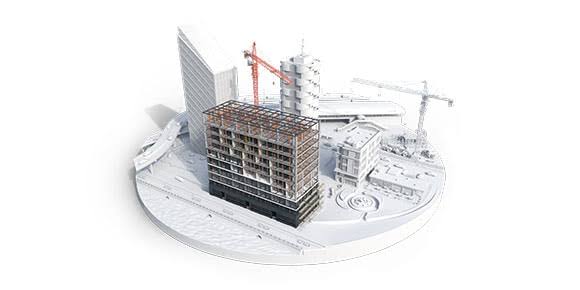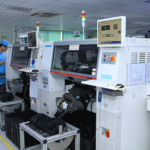Technological breakthroughs in the rapidly developing field of construction have altered the way projects are planned, set up, and completed. Building Information Modeling (BIM) is one such technology that has gained a lot of attention recently.
BIM is a representation or model of a building’s physical and functional attributes that serves as a complete and dynamic platform for collaboration and decision-making throughout the project’s lifespan. Let’s look at the various benefits that BIM has for building projects.
Better design representation and efficiency
Construction experts may use BIM to generate a virtual version of a building before it is built, enabling stakeholders to see the project in three dimensions (3D). This immersive experience helps to improve comprehension of the design goal, uncover possible conflicts, and make informed choices early in the process.
Furthermore, BIM’s intelligent modeling capabilities allow for the rapid and efficient exploration of many design choices, resulting in enhanced design quality and less rework.
Stronger collaboration and communication
Collaboration is essential for any construction project to be successful. By offering a common platform for sharing, integrating, and managing project data, BIM allows greater interaction among architects, engineers, contractors, and other stakeholders.
With BIM, teams may collaborate on a single model at the same time, eliminating inconsistencies and simplifying coordination efforts. Real-time updates and visualizations increase communication and decision-making, resulting in better project results.
Detection of clashes and risk mitigation
A major benefit of BIM is its capacity to identify collisions or conflicts between various building components at the design stage. Clash detection technologies examine the model to discover potential spatial and coordination difficulties during building.
By electronically recognizing and resolving disputes, BIM reduces expensive and time-consuming rework during the building process, thereby considerably lowering project risks.
Precise quantity takeoffs and cost estimation
For project planning and budgeting, accurate quantity takeoffs and cost projections are critical. BIM combines data from several sources, including geometric models, specifications, and databases, allowing for the automated development of detailed quantity takeoffs.
Automations save time and increase accuracy, reducing the possibility of material shortages or overruns. Stakeholders may make well-informed judgments on materials, building techniques, and project viability if they get trustworthy cost information early in the project.
Sequencing and simulation of construction
Construction sequencing and simulation are made possible by BIM’s time-based features, which provide significant insights into project phasing and construction processes. To improve productivity and minimize project durations, construction teams may simulate various situations, identify possible bottlenecks, and optimize building sequences.
Stakeholders may foresee and handle logistical challenges with the capacity to realistically envision the building process, resulting in easier project execution.
Optimized project lifecycle management
The value of BIM goes beyond the building phase. It acts as a complete storehouse of building information, providing vital data for facility management and operations throughout the duration of the project.
Maintenance schedules, equipment specifications, and as-built documents may all be included in the BIM model, allowing for more effective facility management and ensuring the correct information is easily accessible for future restorations or expansions.
Energy efficiency and sustainable design
BIM plays an important role in encouraging sustainable design and energy efficiency in an age of growing environmental consciousness. BIM software provides analytical capabilities for assessing a building’s energy efficiency, daylighting, and thermal attributes, allowing architects and engineers to make more educated choices to decrease energy usage and carbon footprints.
BIM helps to create environmentally friendly buildings that meet sustainability criteria by finding energy-saving options early in the design process.
Rework is reduced
BIM lowers rework on bim for construction projects by improving cooperation, conflict detection, and precise quantity takeoffs. Virtually resolving disputes and detecting design concerns early saves critical time and resources, resulting in significant cost savings.
The ability to recognize and resolve conflicts in the virtual environment eliminates the need for on-site changes, material reordering, and associated delays. Furthermore, BIM’s precise quantity takeoffs and cost prediction provide improved budget management and cost forecasting throughout the project, reducing the risk of unanticipated costs.
Safety and risk management have been improved
Safety is of the utmost importance in the building sector, and BIM may help to improve safety standards. By including safety-related data into the model, BIM allows the detection of possible safety hazards and risks.
Analyzing access locations, finding incompatibilities between structural parts and safety devices, and modeling evacuation routes are all part of this. BIM helps to avoid accidents, reduce worker injuries, and improve overall project safety by addressing safety problems throughout the design process.
Documentation simplification and regulatory compliance
Construction projects need substantial paperwork as well as compliance with regulatory norms. BIM streamlines this process by providing a single platform for storing and managing project data, such as drawings, specifications, and permits.
Changes to the model update relevant documentation automatically, guaranteeing correctness and consistency. Furthermore, BIM supports regulatory compliance by offering tools for code inspection and validation, lowering the risk of non-compliance and related legal concerns.
Effective maintenance of facilities and renovation
Structures need care and modification as they age to preserve their lifespan and usefulness. During the maintenance phase, BIM’s data-rich model becomes a useful tool for facilities managers.
BIM provides effective maintenance planning and execution by combining maintenance schedules, equipment information, and warranty data. Furthermore, when it comes to restoration or extension projects, the current BIM model acts as a firm basis, expediting the design and construction processes.
Client satisfaction and competitive advantage
Adopting BIM technology provides construction businesses with a competitive advantage in a highly competitive market. Companies may demonstrate their expertise in design visualization, collaboration, and project management by leveraging innovative digital technologies.
Clients gain from improved collaboration, cost reductions, and decreased risks brought forth by BIM in building projects. Client satisfaction and long-term relationships are enhanced by the ability to give correct visualizations, clash-free designs, and dependable cost estimates.
Conclusion
Finally, building information modeling (BIM) provides several advantages for building projects throughout their entire lifespan. BIM revolutionizes the construction industry by improving project planning, execution, and facility management, from increased visualization and design efficiency to improved collaboration and communication, conflict detection, precise quantity takeoffs, and cost estimates.
Reduced rework, cost savings, increased safety, simpler documentation, and, ultimately, customer satisfaction come from the use of BIM technology. As the construction industry evolves, adopting BIM becomes more important for being competitive and successful in today’s dynamically built world.








